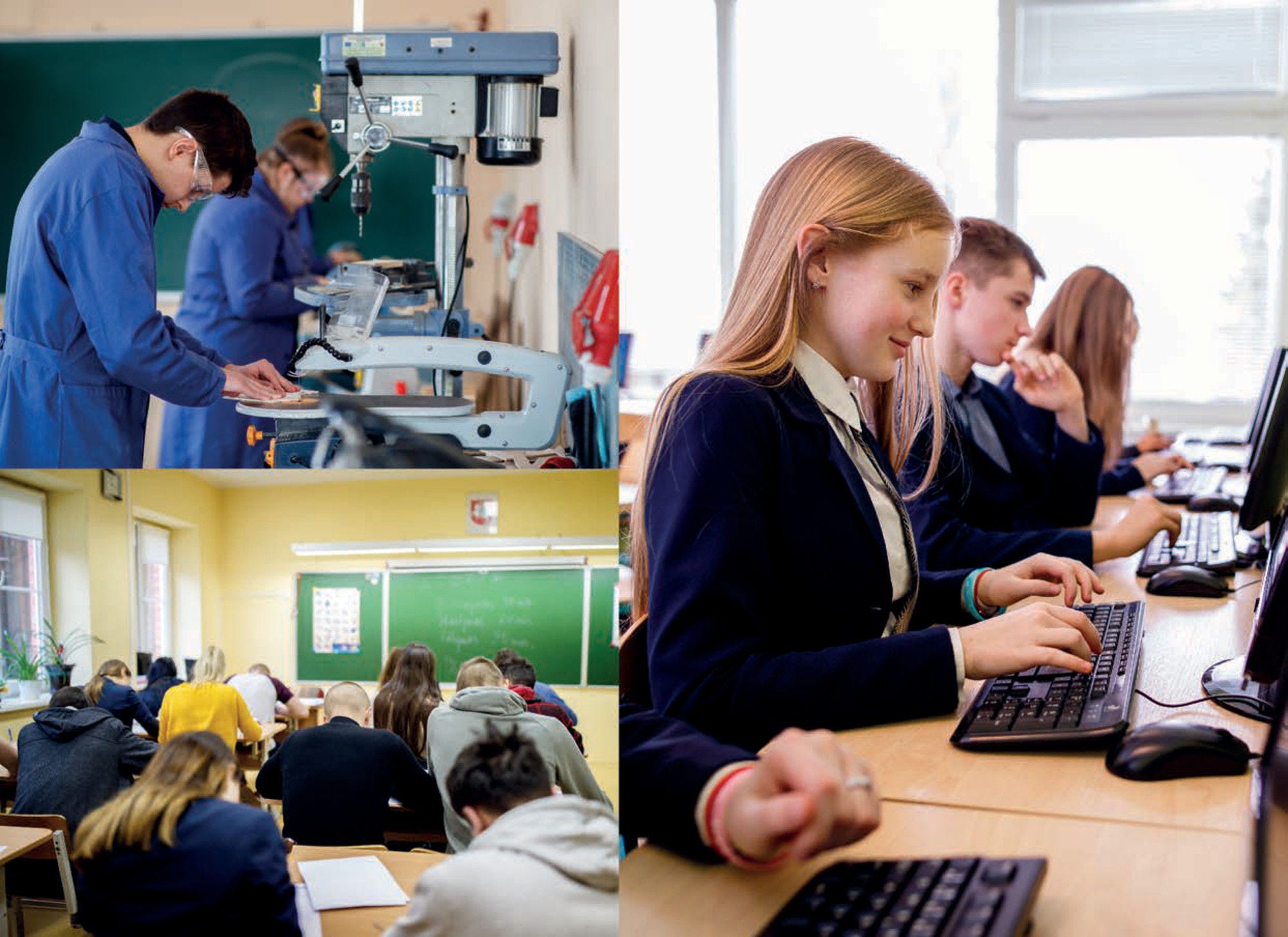Upper secondary education in Lithuania stands out internationally with one of the highest attainment rates across OECD countries. Yet the country and its young people receive relatively modest returns in terms of learning outcomes for the country's high rates of upper secondary completion. To address this issue, Lithuania is currently undertaking a series of reforms at the upper secondary education level. This report explores how Lithuania, and its young people can achieve higher returns on its investment in upper secondary education and provides Lithuania with policy recommendations to help improve it by strengthening vocational education pathways and by consolidating upper secondary certification.
Strengthening Upper Secondary Education in Lithuania

Abstract
Executive Summary
Upper secondary education in Lithuania stands out internationally with one of the highest attainment rates across OECD countries. Yet the country and its young people receive relatively modest returns in terms of learning outcomes for the country's high rates of upper secondary completion. According to the OECD’s Programme for the International Assessment of Adult Competencies (PIAAC), attaining upper secondary education in Lithuania provides the smallest positive contribution across OECD countries to an individual’s performance. Of particular concern is the performance of students enrolled in Vocational education and training (VET). PIAAC suggests that VET in Lithuania contributes far less to young people’s skills and knowledge acquisition than in other countries, with young VET graduates performing at almost the same level as those who did not complete upper secondary education. Furthermore, VET students in Lithuania are more likely to leave their programme before completion compared to their peers in general education, and even when they do complete, they have a harder time finding employment compared to vocational graduates in other OECD countries.
To improve the learning outcomes of all upper secondary graduates, Lithuania is currently undertaking a series of reforms. These include changes to how students enter upper secondary education, the introduction of a new curriculum explicitly oriented towards competency development, and reform of the national upper secondary examination and certification, the Matura.
This report provides a set of policy options to support Lithuania’s reforms and national priorities for strengthening upper secondary education. It was developed by the OECD Above and Beyond: Transitions in Upper Secondary Education project at the request of the Lithuanian National Agency for Education (Nacionalinė švietimo agentūra). The report focuses on two priority areas identified by Lithuania - upper secondary pathways, and assessment and certification in upper secondary education. These are discussed below and elaborated in subsequent chapters.
Strengthening vocational education and training pathways in upper secondary education in Lithuania (Chapter 3)
Lithuania places significant importance on creating valued upper secondary pathways that young people are attracted to, and which will provide the country’s economy with strong technical skills to drive production and innovation. Despite the considerable efforts to raise enrolment in vocational education and improve its attractiveness, Lithuania has not yet met its national targets and the lack of graduates with strong vocational skills has an impact on the labour market reflected in skills mismatch.
Strengthening pathways in vocational education will enable it to become a distinct and respected option that enables young people to access high quality employment and tertiary education. The OECD has developed policy recommendations to help Lithuania realise three essential actions to strengthen upper secondary vocational education and training:
1. Reviewing students’ transitions and orientation into upper secondary education by providing a personalised transition recommendation for each student based on a wide range of information including their learning outcomes, while ensuring that students and their guardians are supported to make an informed decision. To facilitate enrolments in vocational education, Lithuania could also consider modifying the structure of the school system.
2. Creating valued vocational pathways through upper secondary education by designing two separate vocational options: one more work-based programme that gives students extra support to meet minimum requirements in general subjects and prepares students to enter high quality options in the labour market or post-secondary options, and another programme, more technically oriented as a pathway into technically focused employment or tertiary education.
3. Designing pathways with clear and sequential progression out of upper secondary education by rewarding vocational qualifications for selection into post-secondary vocational programmes (particularly at the new International Standard Classification of Education (ISCED) 5 level) and by building sequential programmes at ISCED levels 4 and 5 that allow students to build upon their qualifications and enhance their technical skills. Lithuania will also need to consider improvements to the quality of upper secondary vocational education to ensure that its value is recognised by employers, creating a clear pathway for young, emerging specialists to enter the labour market with strong VET skills.
Consolidating Lithuania’s upper secondary certification to meet learners’ diverse needs and promote higher order, complex learning (Chapter 4)
The introduction of the Matura in Lithuania over a decade ago radically changed young people’s experiences at the end of upper secondary education by introducing a single examination for upper secondary certification and tertiary entry, promoting fairness and reliability. Today however, there are national concerns that the Matura items are predicable, tend to assess knowledge reproduction over competencies and are not always engaging.
The challenges associated with the Matura are particularly acute as the country has started to implement a new curriculum which is explicitly oriented towards competency development. Evidence and experience from countries internationally consistently highlights that aligning certification and assessment with the curriculum is essential if the curriculum on paper is to become the curriculum that students learn in classrooms. This concern is especially prevalent in upper secondary education, where the stakes attached to upper secondary certification mean that assessment at this level invariably influences to a large extent where and how teachers and students focus their time and energy in the final phase of schooling.
For Lithuania, creating a more engaging certification that effectively assesses the competencies that young people need for future success in post-secondary education and employment is essential to help orient upper secondary education towards the skills and knowledge that matter. The OECD has developed policy recommendations to help Lithuania realise three essential actions to improve certification and assessment in upper secondary education:
1. Supporting continual improvement and high-quality assessment by developing a cycle of a continuous review, research and evaluation to ensure that the Matura remains fit for purpose. Of central importance is developing independent technical assessment expertise for national examination development and supporting the use of examination results across the education system to encourage assessment expertise and research that drives improvements.
2. Introducing more alternative types of assessment, such as projects, extended essays, performance and investigations, which can facilitate the assessment of social-emotional skills like planning, self-reflection, investigation and collaboration. The report suggests how Lithuania can make the current project more accessible to encourage the currently limited take-up while creating a more reliable project assessment so that the results are trusted, especially by tertiary institutions.
3. Providing more flexible choices and options within the Matura to better meet learners’ diverse needs and interests – and provide them with the depth of skills and knowledge that they need for the future. As well as focusing on how the Matura can recognise greater diversity for all students, the report provides specific recommendations to better meet the needs of vocational students through a dedicated upper secondary certification for vocational students.
Related publications
-
 21 November 2024
21 November 2024 -
 16 September 2024
16 September 2024 -
30 July 2024



